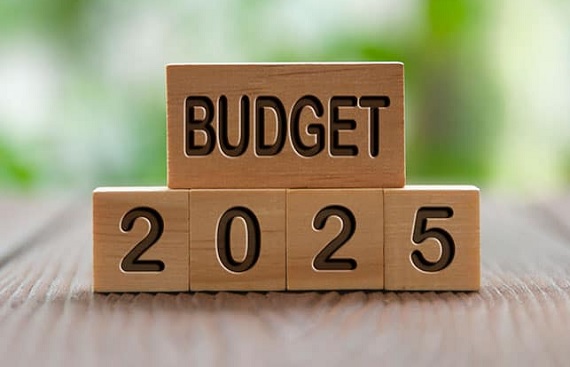Budget 2025 Strengthens India's Macro Position Amid Global Uncertainty
By
siliconindia | Monday, 03 February 2025, 04:13 Hrs

The Union Budget for 2025-26, presented by Finance Minister Nirmala Sitharaman on 1 February 2025, reaffirmed India's robust macroeconomic positioning amidst global uncertainties. As a full year of the third term of the government, it had set the course for India's long-term economic vision of 'Viksit Bharat.' The budget, which has attempted an optimal balancing of fiscal consolidation and investment-led growth, simultaneously lifts consumption and addresses broad-based growth in India.
One of the key highlights in the budget would be its inclusive growth, along with targeted measures for farmers, MSMEs, youth, and women. The government will focus on stimulating agricultural growth, promoting exports, and fostering innovation to strengthen the economic resilience of India.
The fiscal deficit for FY26 is estimated at 4.4 percent of the GDP, down from 4.8 percent in FY25, well within the government's promise of reducing it below 4.5 percent over a long period of time. The total government expenditure has been increased to Rs 50.6 trillion, representing an increase of 7.4 percent from the revised estimates of the previous year. To fund this, the Centre has increased its gross borrowing target for FY26 by 5.7% to Rs 14.8 trillion. Total receipts are pegged at Rs 11.8 trillion.
Infrastructure-led growth has been one of the primary focuses, and capital expenditure has been allocated at Rs 11.21 trillion, which is a 10% increase from revised estimates in FY25. The effective capital expenditure, including grants for capital asset creation, amounts to Rs 15.5 trillion. The government has also kept aside Rs 1.5 trillion for 50-year interest-free loans to states, which reiterates the commitment to long-term economic development.
Recognizing the importance of MSMEs, which contribute nearly 45% to India's exports, the finance minister increased the credit guarantee cover from Rs 5 crore to Rs 10 crore. This step is taken with the objective of improving access to funding and further strengthening small businesses, which form the backbone of employment and economic activity. Startups are also a priority as they create employment and lead the way in the technological arena.
To increase household consumption, the budget offers income tax relief for individuals earning up to Rs 12 lakh under the new tax regime. With almost 85% of Indian taxpayers falling within this bracket, it is expected that the measure will enhance disposable income, encourage spending, and drive savings.
The corporate sector has seen a series of reforms to ease the ease of doing business. The government has announced faster approval for company mergers and the establishment of a high-level committee for regulatory reforms in the non-financial sector. The launch of the National Manufacturing Mission further reinforces the Centre's commitment to self-reliance in renewable energy, aiming to strengthen domestic production capabilities.
It also has indirect tax measures to spur domestic manufacturing and induce value addition across key industries. These will show traction in many sectors, such as FMCG, automobiles, consumer durables, EVs, battery production, travel, and retail.
With fiscal consolidation and consumption-led growth remaining the focus, the equity markets are expected to respond positively. The budget maintains a balance of fiscal prudence with pro-growth measures in order to project India as an economy that will be stable and resilient in an otherwise fragile global landscape.
